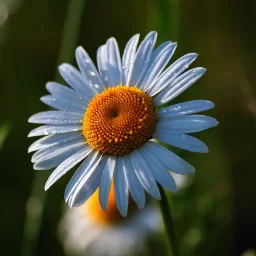Plants for a Shady Garden
For most gardeners an important consideration when choosing a house is the aspect of the garden. Ideally we would all like a south facing garden with an open sunny aspect. But this is not always possible. It is true to say that everyone has a bit of shade in their garden, either from a fence, a building or trees. However, don’t despair. If you do have a shady garden or an area in your garden that stays sunless for most of the day, there are plenty of plants you can choose that will thrive in such conditions. Here are just a few.
If your garden is in shade for most of the day then chances are that it will face north. North facing gardens are as a rule cold and sunless. But these are ideal conditions for many shade loving plants. A north facing garden also tends to be damper as well, which just so happens to appeal to the same plants.
Shade loving trees
Shade loving trees tend to be smaller growing varieties because in the wild they would be the ones that prefer growing in the shadier areas of a woodland such as under the canopy of taller trees. Cornus sanguine or Dogwood is a small deciduous trees which grows up to a height of 10m. It is mainly grown for the striking colour of its stems in winter. The stems of ‘Winter Flame’ turn to shades of orange-yellow, orange-red and red in winter which gives the impression of flickering flames. Taxus Baccata or Yew is an evergreen ornamental tree that is very tolerant of medium to dense shade. It also prefers moist well-drained soils. Acer Palmatum or Japanese Maples will tolerate partial shade and are well known for their beautiful bark and autumn colour. Although they will tolerate shade, they don’t like strong winds, so make sure you position them in a sheltered area of the garden.
Shade loving perennials
Bergenia or Elephant’s Ears is a hardy evergreen perennial that will tolerate part or full shade. It has large fleshy leaves and flowers in April to May. In winter the foliage of some varieties turns a striking purple colour. Hardy Geraniums or Cranesbill are well worth adding to your shady garden. Low growing, with a spreading habit, this perennial comes with flowers in many shades and will flower all summer long. Ajuga or common bugle makes good ground cover for a partially shady area. Most have blue or pink flowers and it will grow very well under trees or large shrubs. Cyclamen is another shade lover that grows happily under trees or shrubs and once planted it will stay in the ground for years. Angelica is a striking architectural plant that will add height and structure to a shady border, although you can get some smaller varieties. Its leaves are domed with tiny flower heads in early summer. Hostas are ideal ground cover in shady moist areas. They are grown for their striking foliage which comes in a variety of colours from yellow, green to blue.
Shade loving shrubs
Aucuba japonica or Japanese Laurel is an evergreen shrub with glossy green or variegated leaves. It is perfectly happy in full shade and will tolerate most soil conditions as long as it is not waterlogged. It has striking red berries in autumn and can also be used as a hedging plant. Camellias can be a bit temperamental and vulnerable to spring frosts but are well worth growing in a shady garden for their wide variety of flower shapes and colours. They prefer a slightly acidic soil away from strong winds. Camellias can be grown successfully in garden planters filled with ericaceous compost. This makes them easy to move to protect from early frosts. Mahonias are very hardy evergreen shrubs with bright yellow flowers in winter. Some varieties will grow in full shade. Euonymus is another easy to grow evergreen shrub. It is grown for its foliage which comes in a variety of greens and is often variegated. Pieris is a medium sized evergreen shrub grown for its glossy foliage that changes colour from red to green in spring. This shrub is best in a shaded spot away from strong winds.
Planting a shady part of the garden is subject to trial and error, as is most garden planting. Monitor the shade in your garden and make a note of those areas that receive the most sun and those that hardly see any at all. Those plants that tolerate certain amounts of shade may need moving to find a spot that suits them best, but that is alright, its knowing our gardens well that helps them evolve to their full potential and there is no reason why a shady garden can’t look every bit as stunning as one that enjoys the sun.
planters
#Plants #Shady #Garden
Will be pleased to have you visit my pages on social networking .
Facebook page here.
Twitter account is here.
Linkedin account here
Post byBedewy for info askme VISIT GAHZLY


